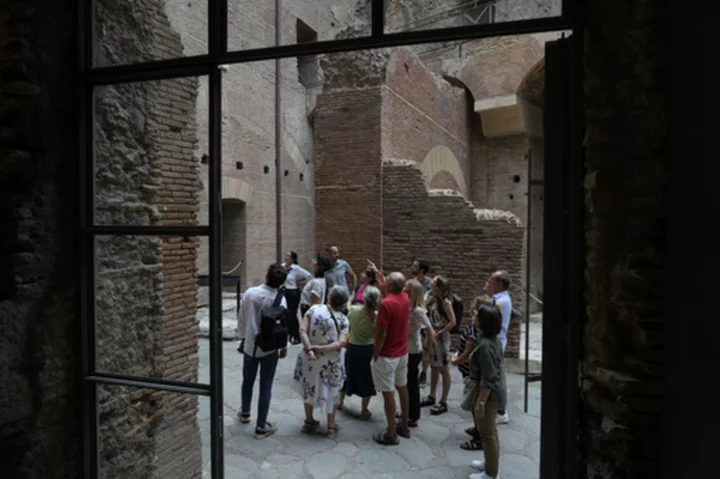ROME (AP) — An ancient Roman imperial palazzo atop the city's Palatine Hill was reopened to tourists on Thursday, nearly 50 years after its closure for restoration.
The nearly 2,000-year-old Domus Tiberiana was home to rulers in the ancient city’s Imperial period. The sprawling palace allows for sweeping views of the Roman Forum below.
The public is now able to tour it, following decades of structural restoration work to shore the palace up for safety reasons. Excavations uncovered artifacts from centuries of Roman life following the decline of the empire.
The director of the Colosseum Archeological Park, which includes the Palatine Hill, in a written description of the restored palazzo, dubbed it “the power palace par excellence.”
On the eve of the reopening, the official, Alfonsina Russo, quoted a first-century Roman poet as saying the sprawling palace seemed “infinite” and that "its grandiosity was just like the grandiosity of the sky.”
Although the domus, or residence, is named after Tiberius, who ruled the empire after the death of Augustus, archaeological studies indicated that the palace's foundations date from the era of Nero, shortly after the fire of 64 A.D that devastated much of the city.
After the demise of the Roman Empire, the residence suffered centuries of abandonment, until when, in the 1500s, the Farnese noble family developed an extensive garden around the ruins.
Thanks to the palazzo's reopening to the public, visitors today can get a better idea of the path ancient emperors and their courts enjoyed en route to the domus.
The English word “palatial” is inspired by the sumptuous imperial residence atop the Palatine, one of ancient Rome's seven hills.
The domus, built on the northwest slope of the hill, is considered to be the first true imperial palace. Besides the emperor's residence, the complex included gardens, places of worship, quarters for the Praetorian Guard that protected the ruler and a service district for workers that overlooked the Roman Forum.
Excavation and restoration work, carried out also during the coronavirus pandemic when for months tourism was at a minimum, helped archeologists piece together what Russo calls centuries of history in a place that “somehow went forgotten.”
On display for those visiting the reopened domus is a selection of hundreds of artifacts that were found, including objects in metal and glass. Statues, other decorations and ancient coins were also dug up.









